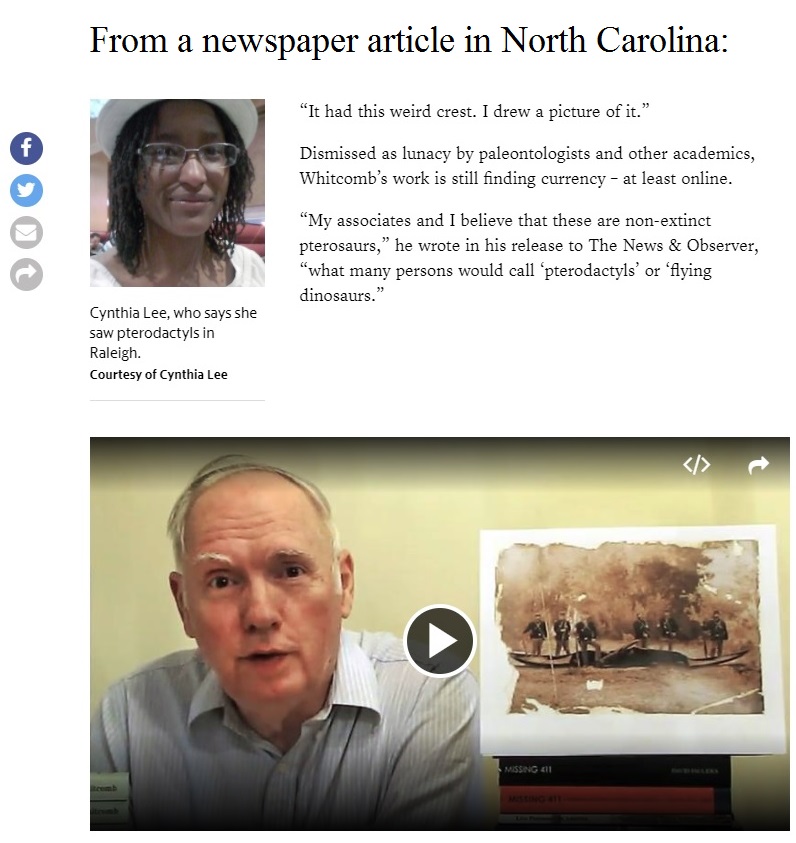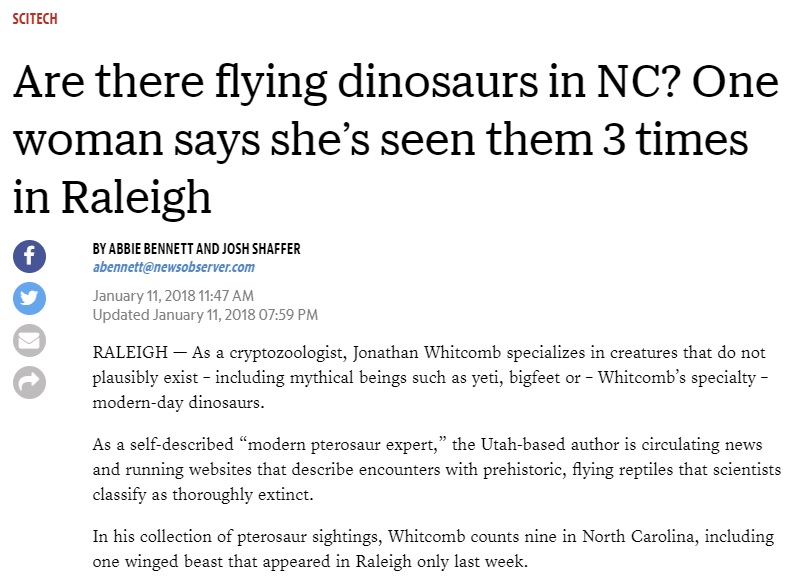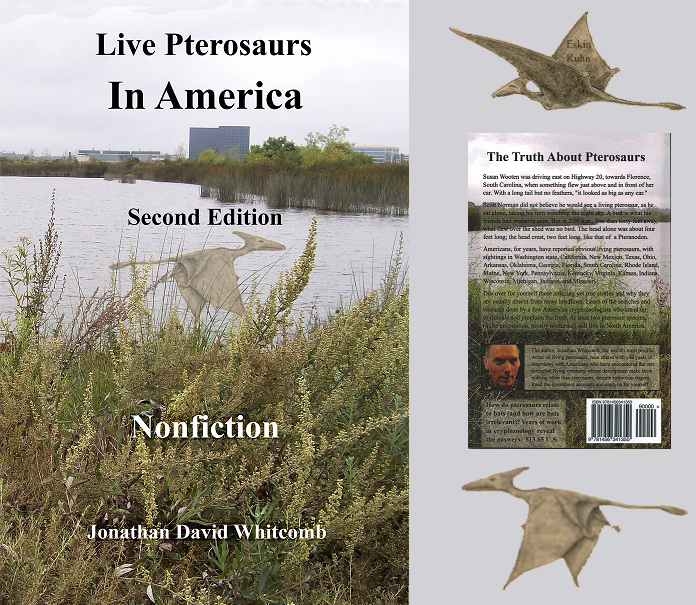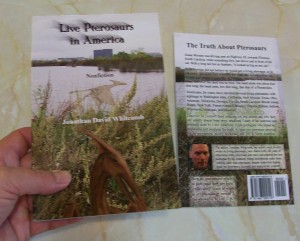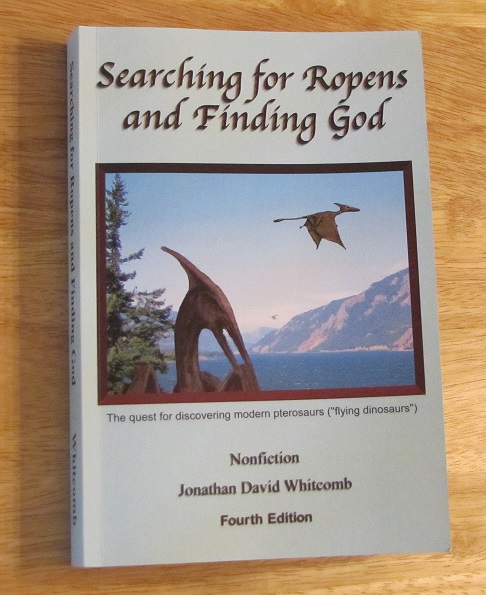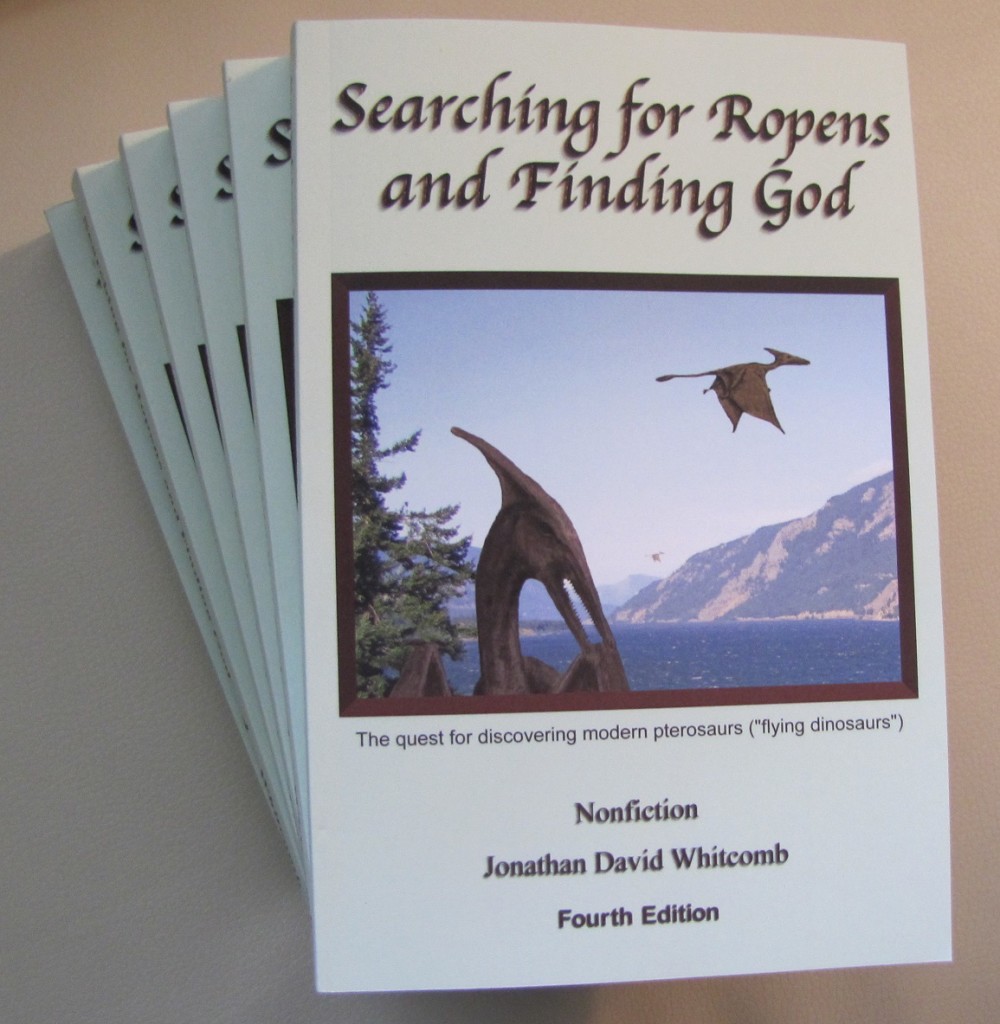By the living-pterosaur cryptozoologist Jonathan Whitcomb
UPDATE: One link on this post (about sightings of living pterosaurs in North Carolina) has been updated with “https” in the URL. It was always safe. This just demonstrates that the security is certified.
. . .
The News & Observer published an article, earlier this week, about a sighting by Cynthia Lee and about my ideas on non-extinct “pterodactyls,” including pterosaur sightings in Raleigh, North Carolina. It was not the first newspaper article on this kind of encounter in the USA and on my work in cryptozoology. In accuracy and objectiveness, it was about average, meaning it had a number of mistakes and was weighted in favor of the old assumptions about universal extinctions of pterosaurs. The two writers (Abbie Bennett and Josh Shaffer) seem to have avoided any deep research into the possibility that eyewitnesses in North Carolina may have witnessed actual living pterosaurs.
Don’t misunderstand me here: I’m glad they published that article on January 11, 2018, for I hoped for something like that, when I contacted them, and I’m not surprised that they took the traditional point of view that all pterosaurs are extinct. After all, the News & Observer is the second largest newspaper in North Carolina, a regional daily source of news, not a paranormal publication.
.
“Are there flying dinosaurs in NC? One woman says she’s seen them three times in Raleigh”
See the link “Flying Dinosaur in North Carolina,” at the bottom of this blog post
Newspaper article in North Carolina (News & Observer)
A Typical Day in a Newspaper Office
Bennett and Shaffer wrote this article as one would expect the typical American newspaper professional to write. Nobody expected them to try for a Pulitzer Prize. It was probably just another day for them, handling a local and regional issue that would certainly be of interest to the average reader.
I can understand their position. Why risk making a paleontologist, or other scientist, upset with a story that might suggest even one eyewitness, out of many, might have witnessed an actual pterosaur? How much safer to assume that all the eyewitnesses were somehow wrong! Those two writers chose the safe but entertaining approach, like many other newspaper professionals would choose. They ended with this:
“Whether these sky-bound shapes are mythic beasts, ancient reptile survivors or great blue herons playing dress-up, they make for lively conversation.”
That seems like a fair ending to the article, avoiding any offense to anyone: another interesting story on an average day. I would be delighted if many American newspapers would publish stories like that, for I feel sure that someday, in some town or city in America, some newspaper professional will be struck by the possibility that maybe great blue herons are not playing dress-up. Will that article, whenever and wherever it will be published, fly well enough for a Pulitzer Prize? I’m willing to help that writer make a run for it.
###
.
Living Pterosaurs in North Carolina
Jonathan Whitcomb, author of nonfiction cryptozoology books, has suggested that flying creatures reported in Raleigh, North Carolina, over several years, may be related to what Americans in other states have reported to him over the past fourteen years.
.
Living pterosaur in an Ohio newspaper article
Something on front page of the Antwerp-Bee Argus newspaper was different, on August 5, 2009. It was the live pterodactyl that made the news.
.
Houston Chronicle Denies Dinosaurs in Texas
One of the largest newspapers in the United States, the Houston Chronicle, printed an article dismissive of dinosaurs flying over southwest Texas (mid-December, 2010, by Claudia Feldman).
.
Living pterosaurs in a newspaper article
An 1891 issue of the Los Angeles Herald newspaper had an article from an earlier California news publication, about reports of “dragons” flying over an area south of Fresno, around Selma.
.
Non-extinct pterodactyls and cryptozoology
“Since the time of Darwin, many scientists have assumed that some general types of animals became extinct long ago. One of the assumptions is that all species of dinosaurs and pterosaurs died off before any humans existed.”
.
Flying creature in Raleigh, North Carolina
I saw the shadow of big wings on the ground, so I looked up and I saw a winged, brown, species of [pterosaur] flying in the sky in the afternoon around 6 pm while me and a guy was standing at the bus stop.
.
Flying Dinosaur in North Carolina
Newspaper article in the News & Observer in Raleigh, January 11, 2018 [It may be that this page about sightings of apparent pterosaurs is no longer available on this newspaper’s site.]
.



